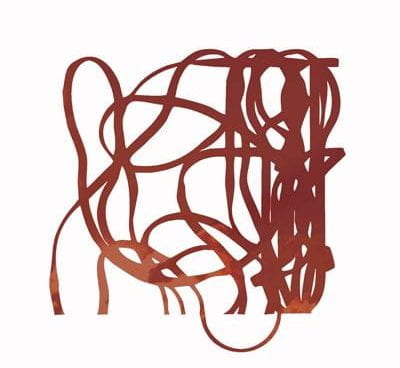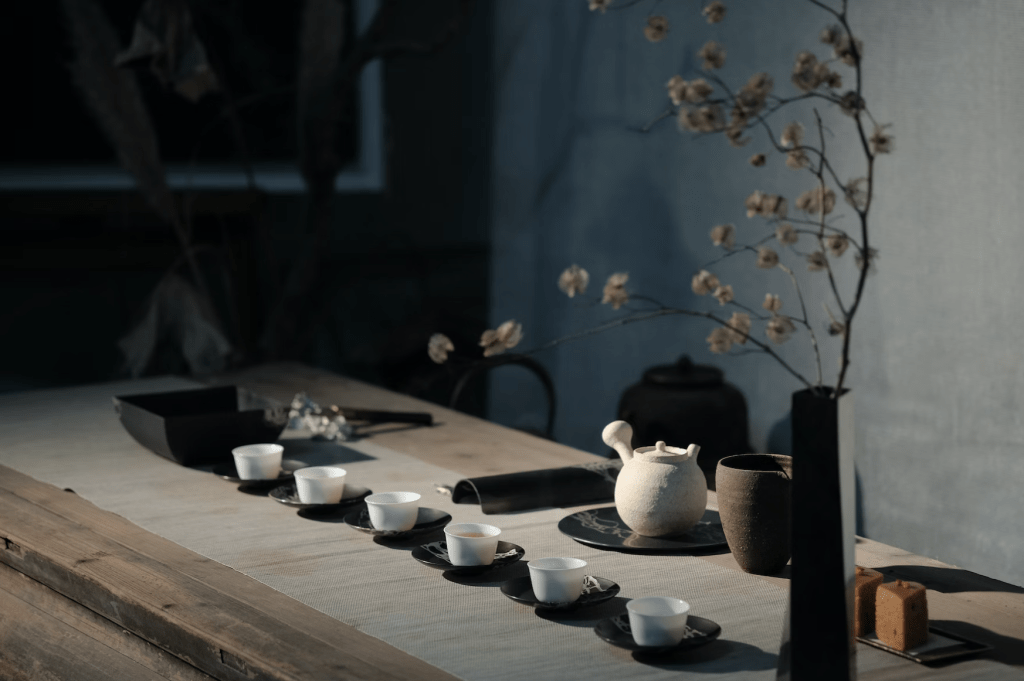
Tea has played a significant role in traditional Chinese culture and Chinese daily life for thousands of years. There is a saying in China: “There are seven daily necessities: wood (coal), rice, oil, salt, sauce, vinegar and tea.” (开门七件事,柴米油盐酱醋茶 Kāimén qī jiàn shì, cháimǐyóuyán jiàng cù chá).
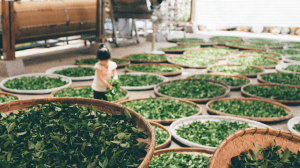
The History of Chinese Tea
With a history of more than 4,000 years, China is the birthplace of tea and is renowned for its high-quality tea and its tea culture. Most scholars credit the legendary emperor Shen Nong, who lived almost 5,000 years ago, as being the first person to discover the effects of tea. He was known to have tasted numerous leaves to determine if they could be used as food or medicine. One day, he was exhausted after a long day of picking and tasting leaves. When he was boiling water, some leaves fell in. It tasted good and he found it very refreshing. So according to legend, tea was discovered in 2737 BC.
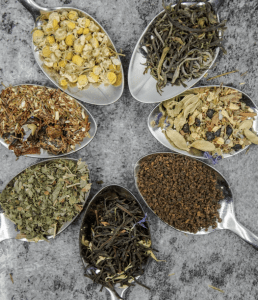
Chinese Tea Types
Chinese tea leaves can be divided into six types according to colour and processing method: green tea, white tea, yellow tea, blue tea, black tea and dark tea.
- Green tea is unfermented and is the most popular type of tea in China. The most famous green tea is West Lake Dragon Well Tea.
- White tea is lightly fermented. The popular brands of white tea are White Peony and Silver Needle.
- Yellow tea is also lightly fermented. Junshan Yinzhen is the most popular yellow tea.
- Blue tea is also known as Oolong tea and is semi-fermented. Tie Guanyin and Dahongpao are the most popular blue teas in China.
- Black tea fully is fermented. Keemun and Dian Hong are the most famous black teas in China.
- Dark tea is a kind of post-fermented tea. The most common type of dark tea is Pu’er tea.
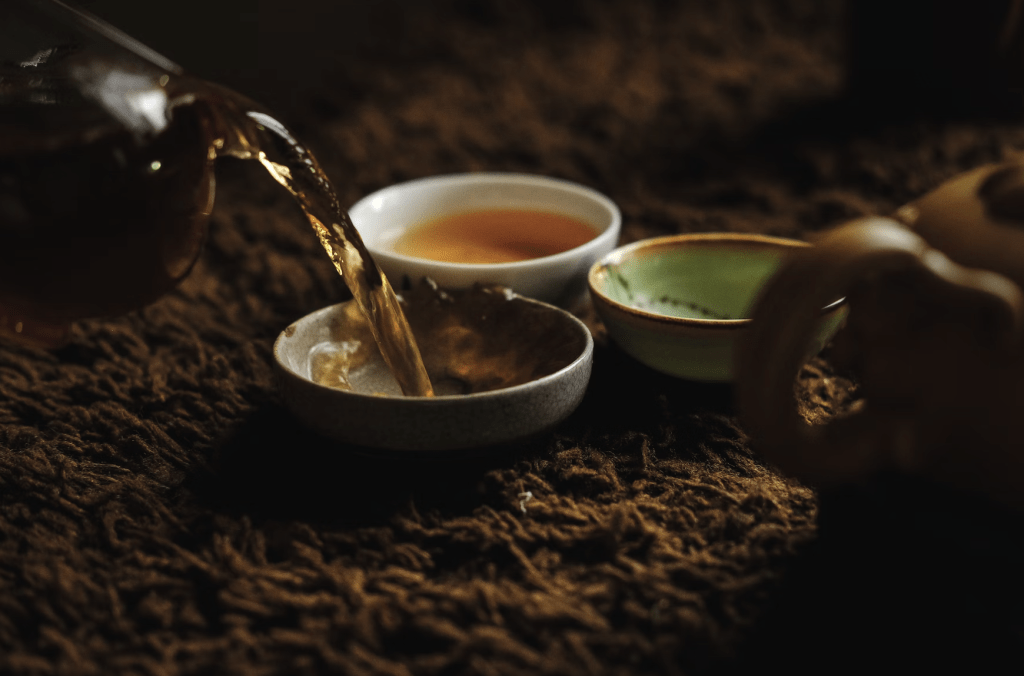
Brewing Chinese tea
Chinese tea can be brewed in different ways depending on factors such as the kind of tea, the purpose of drinking it, and the formality of the occasion. For example, green tea is more delicate than black tea so it should be brewed with water at around 80°C. The most informal method of brewing tea is simply to add the leaves to a cup or a pot containing hot water. People often make tea this way in normal day-to-day settings.
However, for Chinese tea lovers, the most popular method of tasting tea, and the one we will look at here, is known as gongfu tea, which means taking time to make tea with skill and focus. It might be served in this way to guests at home, but people may also just prepare it like this themselves as a way of taking a pause in their day and focusing on the fragrance, taste, and colour of good quality tea.
For the gongfu method a tea set is used which includes: a tea tray or a board, a small tea pot or a gaiwan (a small, lidded bowl), some teacups, a tea pitcher, and a tea strainer. The method is suitable for oolong teas, black teas and dark teas. Here are six steps to make gongfu tea.
- Before making tea, we should prepare a clean tea set, some tea leaves (8g for oolong tea or 5g for dark tea) and a kettle of boiling water. Mineral or purified water is recommended.
- Pre-heat all the tea ware with boiling water.
- Put the tea into the gaiwan, and cover it in boiling water and then discard quickly. This helps to get rid of any dust or small tea particles and opens the tea leaves for brewing.
- Cover the tea with more boiling water, and let it infuse for 20-30 seconds depending on the tea. Only a very short brewing time is needed because the ratio of tea to water is very high.
- Pour the tea into the tea pitcher. This makes sure that the tea is the same strength when poured into the cups.
- Serve the tea to the guests and taste it.
The same leaves can be brewed multiple times with the flavour changing with each steeping.
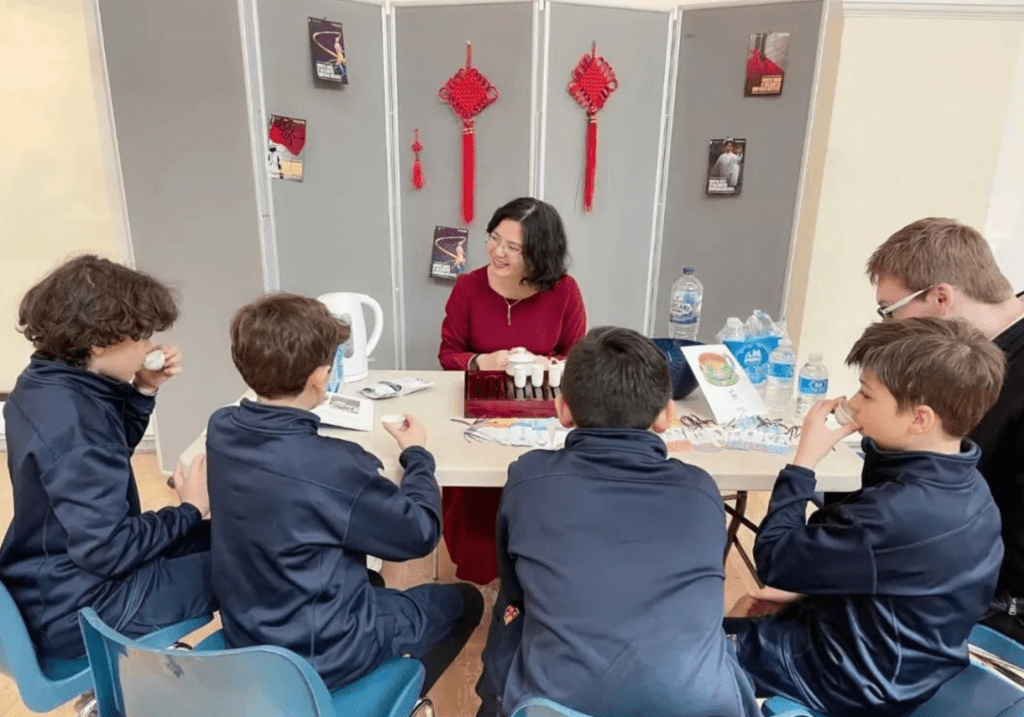
If you are a tea lover and would like to learn more about Chinese tea, you can get in touch with us. We offer bespoke Chinese tea ceremony workshops to schools and organisations.
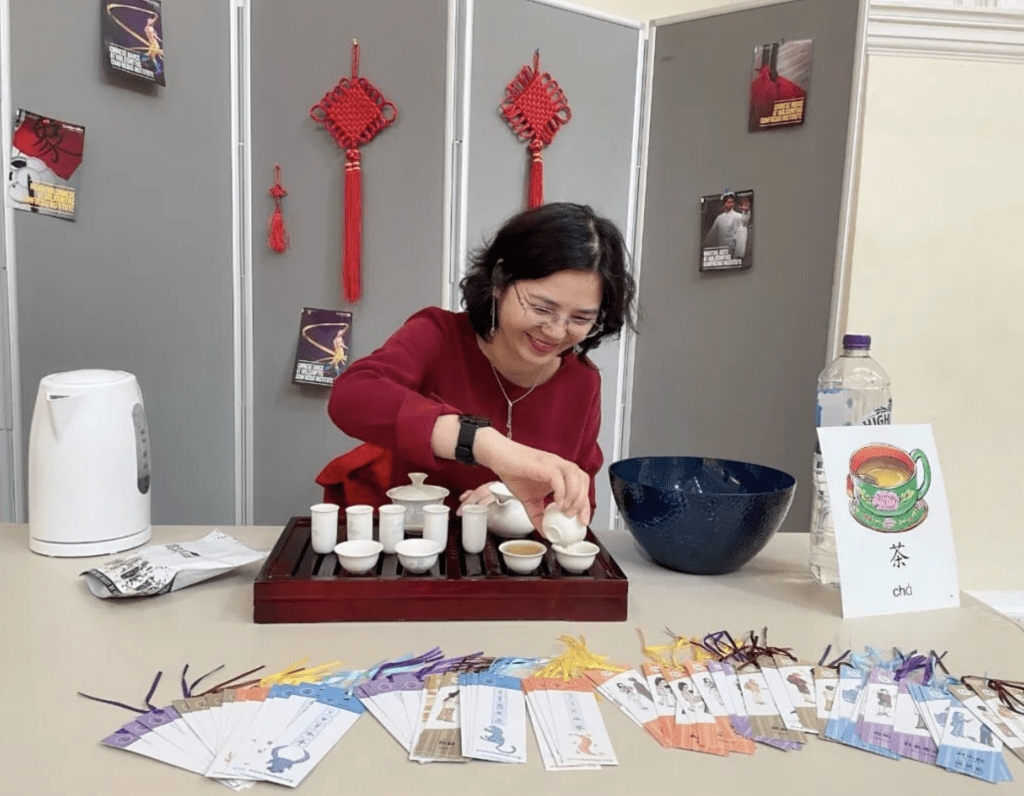
Chenjin Ying graduated from Zhejiang Normal University with a BA in Chinese Language and Literature Education in 1998. She subsequently attended Peking University and graduated with a MA and BA in Chinese Linguistics.
Chenjin is on secondment from Capital Normal University (CNU) in Beijing, during her time at Goldsmiths she lectures on undergraduate and credit course modules. She also teaches on our Mandarin short courses and participates in Chinese tea ceremony workshops.
Whilst at CNU, Chenjin lectures in Mandarin, Chinese linguistics, and TCSOL at both BA and MA levels as well as giving talks and workshops for overseas Mandarin teachers. She was awarded the title of Outstanding Teacher in 2017.
Chenjin has taught Mandarin learners and has trained Mandarin teachers at universities in Germany, Belgium, and USA.
